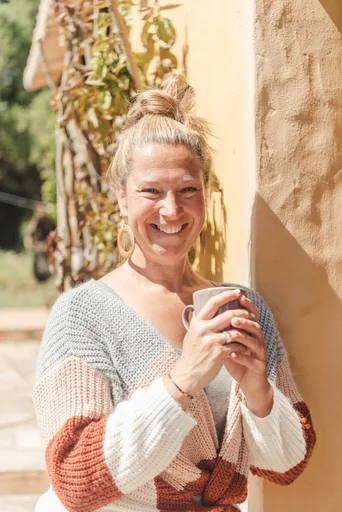Yoga Poses | Backbends | How to Use the Glutes Correctly in Backbends

Understanding Backbends and Glutes in Yoga Poses
When it comes to yoga, backbends are a fundamental part of the practice, offering a range of physical and mental benefits. Backbends involve bending the spine backward, creating an arch that opens up the front side of the body. This movement not only increases flexibility but also strengthens the back muscles and improves posture. The glutes, or gluteal muscles, play a crucial role in supporting the body during backbends.
What are Backbends?
The Basics of Backbends
Backbends are a category of yoga poses that focus on opening the front side of the body while simultaneously engaging and strengthening the back muscles. These poses can vary from gentle stretches to more advanced postures that require significant flexibility and strength.
Benefits of Practicing Backbends
The practice of backbends offers numerous benefits, including improved spinal flexibility, enhanced posture, and increased energy levels. Additionally, these poses help open up the chest and shoulders, promoting deep breathing and emotional release.
The Importance of Glutes in Yoga
Functions of the Glutes
The gluteal muscles consist of three main muscles: gluteus maximus, gluteus medius, and gluteus minimus. These muscles play a vital role in stabilizing the pelvis, supporting hip movement, and maintaining overall lower body strength.
Why Glute Engagement Matters
Engaging the glutes during yoga practice provides muscular stability for the sacrum and low back while contributing to hip extension. However, there is an ongoing debate within the yoga community regarding whether to engage or relax the glutes in backbends. Different schools of thought provide conflicting advice on this matter.
Incorporating proper glute engagement in backbends is essential for maintaining structural integrity and preventing potential injuries related to overextension or compression in the lower back region.
By understanding both backbends and glutes' significance in yoga practice, practitioners can approach these poses with mindfulness and awareness towards their own bodies' needs.
The Role of Glutes in Backbends

Engaging the Glutes: The Debate
The role of glutes in backbends has sparked a debate among yoga teachers and practitioners regarding whether to engage or relax these muscles during the practice. Different views exist within the yoga community, each offering unique perspectives on the significance of glute engagement in backbends.
Yoga Teachers' Insights:
According to several yoga teachers, there is an ongoing debate on whether engaging or relaxing the glutes is more beneficial during backbends.
Some instructors advocate for active engagement of the glutes to provide stability and support to the lower back, while others emphasize the importance of allowing these muscles to remain relaxed for a more natural and unrestricted movement.
These contrasting viewpoints highlight the complexity surrounding glute engagement in backbends, leaving practitioners with varying opinions and approaches based on their individual experiences and training.
My Personal Experience with Glute Engagement
In my personal exploration of yoga practice, I have encountered differing perspectives on glute engagement in backbends. Initially, I was advised to actively engage my glutes to enhance stability and prevent overextension in my lower back. However, as I delved deeper into my practice, I discovered that finding a balance between engaging and releasing the glutes allowed for a more fluid and intuitive experience during backbends.
My journey has taught me that individual anatomical differences and body awareness play a significant role in determining how one should approach glute engagement in backbends. It is essential for practitioners to explore various methods under the guidance of experienced instructors to find an approach that aligns with their unique needs and physical capabilities.
How Glutes Support the Spine in Backbends
Anatomical Perspective
From an anatomical standpoint, engaging the gluteal muscles provides crucial support to the spine during backbends. The activation of these muscles aids in stabilizing the pelvis and sacrum, preventing excessive compression or strain on the lower back. Additionally, proper glute engagement contributes to maintaining alignment throughout the spine, promoting a balanced distribution of weight during backbend postures.
Enhancing Stability and Flexibility
Engaging the glutes not only enhances stability but also facilitates greater flexibility within backbend poses. By supporting hip extension and pelvic alignment, these muscles create a foundation for safe and effective movement through various degrees of spinal extension. This balanced combination of stability and flexibility fosters a sense of ease and comfort within backbend postures while minimizing undue stress on vulnerable areas of the spine.
Common Mistakes and How to Avoid Them
As practitioners delve into the practice of backbends, it is essential to be mindful of common mistakes that can hinder progress and potentially lead to injuries. Understanding these pitfalls and learning how to avoid them contributes to a safe and effective yoga journey.
Over-Reliance on Glutes in Backbends
Over-engaging the glutes during backbends is a prevalent mistake that can compromise the integrity of the practice. Recognizing when the glutes are overly active is crucial for maintaining balance and preventing strain on the lower back.
Recognizing Over-Engagement
One common indicator of over-reliance on the glutes is a sensation of excessive tension or tightness in the buttocks during backbend postures. This may result in an imbalance between the engagement of different muscle groups, leading to discomfort or limited mobility within the pose.
Tips for Balanced Engagement
To avoid over-reliance on the glutes, practitioners can focus on distributing effort throughout the entire body during backbends. Emphasizing engagement in other supportive muscles, such as the core and quadriceps, helps create a more balanced and stable foundation for backbend postures. Additionally, practicing mindfulness and body awareness allows individuals to tune into their physical sensations, enabling them to adjust their alignment and engagement accordingly.
Ignoring the Glutes Completely
Conversely, neglecting to engage the glutes altogether can also pose challenges during backbend practice. The gluteal muscles play a significant role in providing support and stability for spinal extension, making their involvement essential for safe and effective execution of backbend poses.
Consequences of Not Engaging the Glutes
Failing to activate the glutes may lead to an excessive burden on other muscle groups, such as the lower back muscles. This imbalance can potentially contribute to strain or discomfort in the lumbar region, detracting from the overall experience of backbend postures.
Finding the Middle Ground
Finding a harmonious balance between engaging and releasing the glutes is key to optimizing backbend practice. By integrating moderate glute engagement while maintaining suppleness in this muscle group, practitioners can cultivate a sense of stability without compromising fluidity and ease within their movements.
Incorporating these insights into one's yoga practice fosters a holistic approach that prioritizes balanced muscular engagement while honoring individual anatomical differences.
Practicing Backbends with Correct Glute Engagement
As practitioners progress in their yoga journey, incorporating backbends with glute engagement becomes essential for cultivating strength, flexibility, and mindfulness. Whether you're a beginner exploring foundational poses or an experienced yogi delving into advanced postures, understanding the role of glutes in backbends is crucial for safe and effective practice.
Simple Backbend Poses for Beginners
Cobra Pose (Bhujangasana)
Incorporating backbends into your practice can begin with accessible poses such as Cobra Pose (Bhujangasana). This gentle backbend encourages spinal extension while engaging the glutes to support the lower back. As you lift your chest and arch backward, focus on activating your gluteal muscles to maintain stability and alignment throughout the pose.
Bridge Pose (Setu Bandhasana)
Another beginner-friendly backbend is Bridge Pose (Setu Bandhasana), which offers an opportunity to engage the glutes while opening the front side of the body. As you lift your hips off the mat and create a bridge-like shape with your body, consciously activate your gluteal muscles to support the movement and promote balanced engagement across the entire lower body.
Advanced Backbends for Experienced Yogis
Wheel Pose (Chakrasana)
For experienced yogis seeking more challenging backbend postures, Wheel Pose (Chakrasana) provides an opportunity to deepen glute engagement while expanding spinal flexibility. As you press into your hands and feet to lift into a full backbend, focus on activating your glutes to stabilize the pelvis and sacrum, allowing for a more expansive and controlled expression of this advanced posture.
Camel Pose (Ustrasana)
Incorporating glute engagement in advanced backbends extends to poses like Camel Pose (Ustrasana) where deep spinal extension is combined with active use of the gluteal muscles. As you reach back to grasp your heels and open up through the chest, emphasize engaging your glutes to provide support for the lumbar spine while promoting balanced muscular activation throughout this intense backbend.
Tips for Safe and Effective Practice
Warm-Up Exercises
Prior to engaging in backbends that involve glute activation, it's beneficial to incorporate targeted warm-up exercises that prepare the body for these movements. Dynamic movements such as hip circles, pelvic tilts, and gentle lunges help awaken and engage the glutes while promoting blood flow to the relevant muscle groups.
Listening to Your Body
Throughout your practice of backbends with correct glute engagement, prioritize active listening to your body's feedback. Sensations of stability, ease, or discomfort can offer valuable insights into how effectively you are engaging your glutes, guiding adjustments in alignment or intensity as needed.
By integrating these simple yet profound practices into your yoga journey, you can cultivate a deeper understanding of how correct glute engagement contributes not only to physical strength but also mental resilience within backbends.
Final Thoughts on Glutes and Backbends
Embracing a Balanced Approach
As I reflect on the integration of glute engagement in backbends, I am reminded of the diverse perspectives and experiences shared by practitioners and experts. The testimonies of individuals who have undergone transformative journeys through focused glute training serve as compelling evidence of the profound impact that intentional muscular engagement can have on one's yoga practice.
Testimonials:
Sara Paige, a yoga instructor, emphasizes the significance of a posterior tuck effort combined with gluteal engagement in altering practitioners' perception of backbends. She notes witnessing a substantial shift in students' comfort and empowerment during challenging poses, such as Camel Pose.
An anonymous individual shares their experience with glute training under Bret Contreras, highlighting the paradigm shift from solely focusing on cardio to recognizing the importance of building lower body strength, particularly in the glutes. The testimonial underscores significant physical transformations and newfound confidence resulting from dedicated glute-focused training.
These testimonials underscore the potential for embracing a balanced approach that incorporates intentional glute engagement while honoring individual anatomical differences and unique bodily responses to backbend postures.
The Journey of Yoga Practice
Beyond the specific focus on backbends and glutes, it is essential to acknowledge the holistic benefits that yoga offers throughout one's journey. While glute engagement contributes to stability and support in backbends, it is just one facet of the multifaceted practice of yoga.
Yoga encompasses an expansive array of physical, mental, and emotional benefits that extend beyond isolated muscle groups or specific pose categories. As practitioners delve into their practice, they are met with opportunities for self-discovery, resilience-building, and profound connections between mind, body, and spirit.
The integration of correct glute engagement within backbends serves as a microcosm of the broader principles inherent in yoga – mindfulness, adaptability, and continuous learning. By approaching backbends with an open mind and an eagerness to explore various techniques while respecting personal boundaries and capabilities, practitioners embody the essence of yoga as a transformative journey towards holistic well-being.
See Also
Yoga During Pregnancy: 5 Yoga Poses to Ease Lower Back Discomfort
FAQ: Suggestions for Yoga Poses for Novices
Core Principles of Empowering Yoga: Discovering Your Rhythm Everywhere
We bring back the importance of initiation into womanhood by Roos-Veerle Krijnen & Ella-June Henrard
Welcome to the Women’s Initiation Retreat by Naked Truth Retreats, a transformative journey into the depths of your True Feminine Nature. This retreat, scheduled from 17th to 24th August 2024 in Portugal, invites you to remember the sacredness and wholeness of your being.
Roos-Veerle Krijnen & Ella-June Henrard



